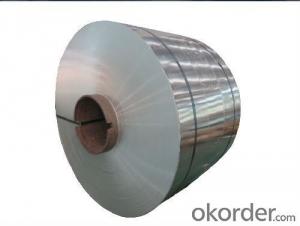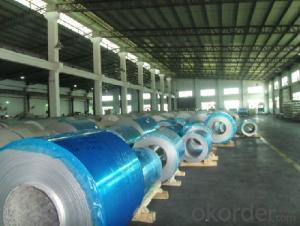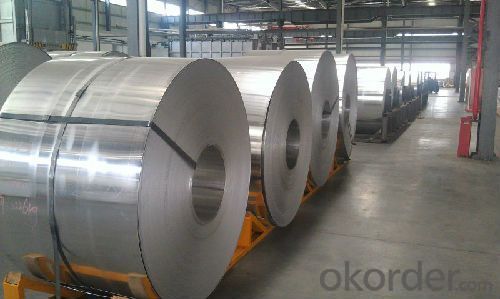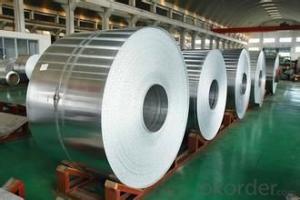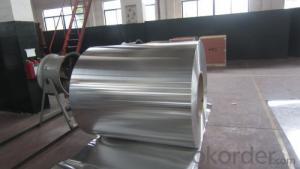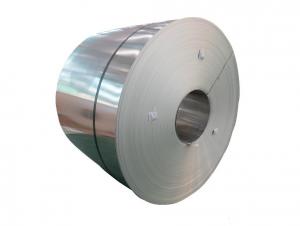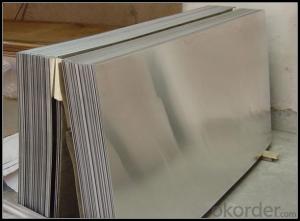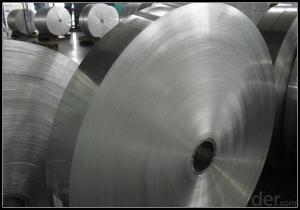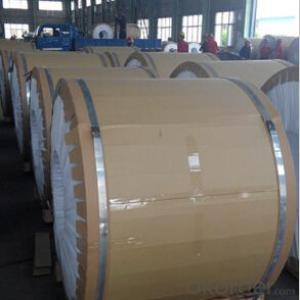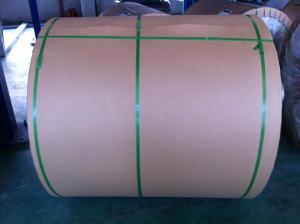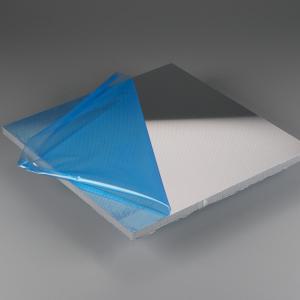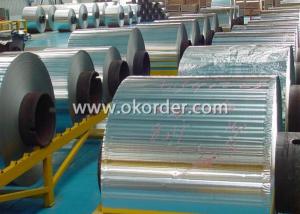Aluminum Cast Coil 1050,1100,3003,5753,5083,6061
- Loading Port:
- Shanghai
- Payment Terms:
- TT OR LC
- Min Order Qty:
- 5 m.t.
- Supply Capability:
- 9000 m.t./month
OKorder Service Pledge
OKorder Financial Service
You Might Also Like
Specification
Product Description
aluminum coil specifications:
1) Alloy :1050, 1060,1100, 3003 3004 3105 3A21 5005 5052 etc
2) Temper: O/H12/H14/H1/H18/H32/H34/H36/H38//H111/H112/H116/H321/T6/T651/T3/T351 etc
3) Thickness: 0.1mm to 6mm
4) Width:20mm to 3300mm
5)Coil weight: 100kgs to 6 tons depends on actual requirement
6)Core material: Aluminum or paper
7)Coil Inner diameter: 75mm, 150mm, 200mm, 300mm, 405mm, 505mm or as required
8) Protective film can be added
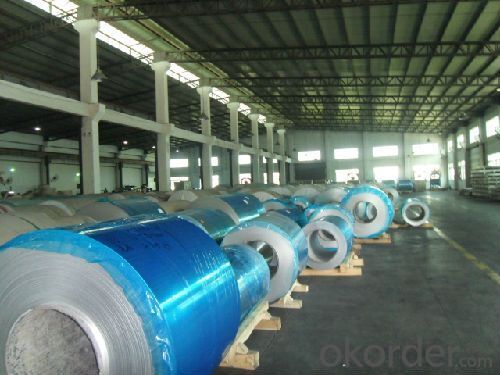
Application
Appplication:construction, roofing, decoration, lamping etc
Packaging & Shipping
Package: eye to wall or eye to the wall for aluminum coil with wood pallet (wooded case also available)

Our Services
1) Reply within 12 hours
2) Free samples provided
3) On-site production following-up
4) Loading inspection with container fixing
5)Third party inspection at your request
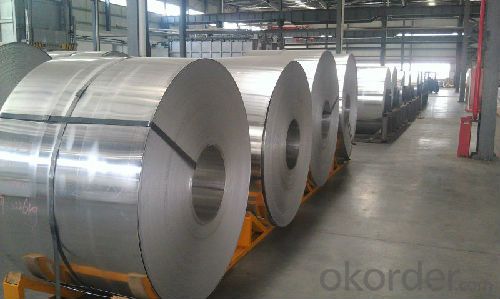
- Q: This is kind of odd, but if a volcano erupted and the lava dripped into an aluminum can, would the can melt? Would the lava harden and cool in it?
- Temperature of lava - 700 degrees Celsius. Melting point of aluminum - 660 degrees Celsius. I'll let you figure out if the can would melt...
- Q: What kind of material is 2A12 aluminum sheet?
- The temperature is higher than 125 degrees C, and the strength of the 2024 alloy is higher than that of the 7075 alloy. Under the condition of hot state, annealing and new quenching, the formability is better, and the strengthening effect of heat treatment is remarkable, but the heat treatment process is strict.
- Q: which kind of enterprises are aluminium sheet circles used in?
- user use cold squezz method to transform the aluminum sheet circle into various standard capacitor shell, aluminium collapsible tube shell, which are broadly used in electron industry, daily chemical industry, medicine, education and automobile products,electrical appliance, heat preservation, machine manufacturing, automobile,spaceflight,military industry,mould, construction, printing and other industries.
- Q: This question asks for methods to protect aluminum sheets from damage during the installation process.
- <p>To prevent damage to your aluminum sheets during installation, follow these steps: Use protective gloves to avoid scratches from hand contact. Handle the sheets with care, especially at the edges and corners. Keep the surface clean and dry to prevent any dirt or moisture that could cause damage. Use appropriate tools designed for aluminum to avoid marring the surface. Ensure the installation site is free from debris that could cause scratches or dents. Install the sheets in a controlled environment to avoid exposure to harsh weather conditions. Finally, consider using a protective film or cover on the aluminum sheets until they are fully installed.</p>
- Q: What are the different methods of surface preparation for adhesive bonding of aluminum sheet?
- To ensure a strong and durable bond between the adhesive and the aluminum surface, various surface preparation methods are available. One commonly used method is mechanical abrasion, where the surface of the aluminum sheet is roughened using abrasive materials like sandpaper or wire brushes. This creates a textured surface that enhances adhesive adhesion. Chemical etching is another option, involving the treatment of the aluminum surface with a chemical solution to eliminate any oxide layer and establish a clean and reactive surface. Depending on the adhesive's specific requirements, acids or alkalis can be utilized for this purpose. For adhesives that necessitate a contaminant-free surface, solvent cleaning can be employed. This process involves the use of solvents like acetone or isopropyl alcohol to eradicate grease, oil, or dirt from the aluminum sheet's surface. In addition to these techniques, specialized methods like anodizing and chromate conversion coating can also be utilized. Anodizing entails the creation of a thick oxide layer on the aluminum surface through an electrolytic process, thereby improving bonding properties. On the other hand, chromate conversion coating involves treating the aluminum surface with a chemical solution containing chromates, resulting in the formation of a protective layer that enhances adhesion. Ultimately, the selection of a surface preparation method depends on the adhesive's specific requirements and the desired bond strength. It is crucial to carefully choose and follow the appropriate method to successfully bond aluminum sheet with adhesive.
- Q: For example, in hydrangeas, when aluminum reacts with the anthocyanins in the flower's petals, the hydrangeas turn blue, but what chemical reaction occurs?
- Two factors affect the color in Hydrangea macrophylla cultivars: soil acidity and the presence of aluminium in the soil. To obtain a blue hydrangea, aluminum must be present in the soil. The pH of the soil should be low (4 - 4.5). In alkaline soil aluminium is tied up. The plants are unable to absorb the existing aluminium and the flowers will not bloom blue. Also, when aluminium in the soil is used up the flower color will be red or pink again. If the soil is watered with aluminium salts aluminium is accumulated in the petals and the color turns blue. Only red and pink colored Hortensis are suitable for the breeding of blue flowers. They contain the dye component delphinidin. At the end of this site you find explanation and the formula: www.uni-regensburg.de/Fakultaeten...
- Q: Can aluminum sheets be used for modular construction?
- Yes, aluminum sheets can be used for modular construction. Aluminum is lightweight, durable, and corrosion-resistant, making it an excellent choice for modular construction applications. It is commonly used for building facades, roofing, and structural components in modular construction due to its strength-to-weight ratio and ease of installation.
- Q: How does the thickness of aluminum sheet affect its strength?
- The strength of an aluminum sheet is directly influenced by its thickness. Generally, a thicker aluminum sheet will possess greater strength compared to a thinner one. This correlation arises from the fact that the thickness of the sheet determines the quantity of material present, ultimately impacting its ability to endure external forces or loads. Typically, the strength of a material is measured based on its capacity to withstand stress without deforming or failing. Thicker aluminum sheets have a larger volume of material, resulting in an increased number of atoms and bonds to counteract forces. Consequently, these sheets exhibit a heightened resistance to deformation or failure, thus rendering them stronger. Furthermore, thicker aluminum sheets boast a higher load-bearing capacity. Consequently, they can endure heavier loads or higher pressures without distorting or failing. The augmented thickness allows for a greater distribution of the load, thereby reducing the stress placed on individual atoms and bonds within the sheet. Nevertheless, it is crucial to acknowledge that there exists a limit to the thickness at which the strength of an aluminum sheet reaches a plateau. Once this threshold is surpassed, further increasing the thickness may not yield significant improvements in strength. This limitation arises from the influence of other material properties of aluminum, such as its crystal structure and grain boundaries, which also contribute to determining its strength. To conclude, the strength of an aluminum sheet is directly linked to its thickness. Thicker sheets possess more material, enabling them to effectively resist deformation or failure under stress. Furthermore, their increased thickness allows them to support heavier loads or endure higher pressures. However, it is important to recognize that there is a limit to the thickness at which the strength plateaus, as other material properties also come into play.
- Q: Can aluminum sheets be anodized for added durability?
- Yes, aluminum sheets can be anodized for added durability. Anodizing is an electrochemical process that forms a protective oxide layer on the surface of aluminum, increasing its corrosion resistance, hardness, and overall durability.
- Q: Is it possible to utilize aluminum sheets in the construction of environmentally friendly buildings?
- <p>Yes, you can use aluminum sheets to create a green building. Aluminum is a sustainable material due to its recyclability and energy efficiency in production. It has a high recycled content rate, reducing the need for raw material extraction. Additionally, aluminum's lightweight nature can lead to reduced energy consumption in transportation and construction. Its durability and resistance to corrosion can extend the life of a building, further contributing to sustainability. However, it's important to consider the entire lifecycle impact, including the energy used in aluminum production, and to source aluminum responsibly to ensure a truly green building.</p>
Send your message to us
Aluminum Cast Coil 1050,1100,3003,5753,5083,6061
- Loading Port:
- Shanghai
- Payment Terms:
- TT OR LC
- Min Order Qty:
- 5 m.t.
- Supply Capability:
- 9000 m.t./month
OKorder Service Pledge
OKorder Financial Service
Similar products
Hot products
Hot Searches
Related keywords

